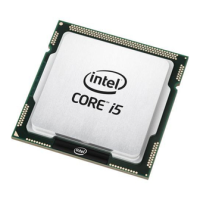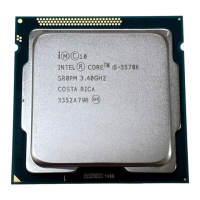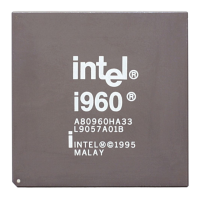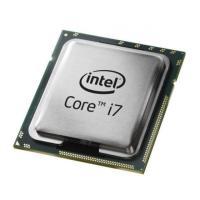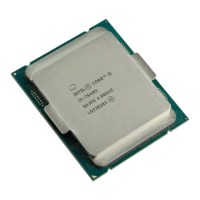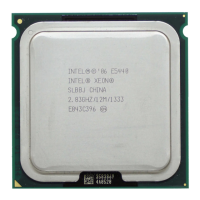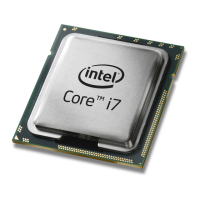19
Specification Update
accessing side-effect memory and by ensuring that all code is written such that a code
segment limit violation cannot occur as a part of reading from side-effect memory.
Status: For the steppings affected, see the Summary Tables of Changes.
AAU6. MOV To/From Debug Registers Causes Debug Exception
Problem: When in V86 mode, if a MOV instruction is executed to/from a debug registers, a
general-protection exception (#GP) should be generated. However, in the case when
the general detect enable flag (GD) bit is set, the observed behavior is that a debug
exception (#DB) is generated instead.
Implication: With debug-register protection enabled (i.e., the GD bit set), when attempting to
execute a MOV on debug registers in V86 mode, a debug exception will be generated
instead of the expected general-protection fault.
Workaround: In general, operating systems do not set the GD bit when they are in V86 mode. The
GD bit is generally set and used by debuggers. The debug exception handler should
check that the exception did not occur in V86 mode before continuing. If the exception
did occur in V86 mode, the exception may be directed to the general-protection
exception handler.
Status: For the steppings affected, see the Summary Tables of Changes.
AAU7. Incorrect Address Computed for Last Byte of FXSAVE/FXRSTOR Image
Leads to Partial Memory Update
Problem: A partial memory state save of the 512-byte FXSAVE image or a partial memory state
restore of the FXRSTOR image may occur if a memory address exceeds the 64KB limit
while the processor is operating in 16-bit mode or if a memory address exceeds the
4GB limit while the processor is operating in 32-bit mode.
Implication: FXSAVE/FXRSTOR will incur a #GP fault due to the memory limit violation as expected
but the memory state may be only partially saved or restored.
Workaround: Software should avoid memory accesses that wrap around the respective 16-bit and
32-bit mode memory limits.
Status: For the steppings affected, see the Summary Tables of Changes.
AAU8. Values for LBR/BTS/BTM Will Be Incorrect after an Exit from SMM
Problem: After a return from SMM (System Management Mode), the CPU will incorrectly update
the LBR (Last Branch Record) and the BTS (Branch Trace Store), hence rendering their
data invalid. The corresponding data if sent out as a BTM on the system bus will also be
incorrect.
Problem: Note: This issue would only occur when one of the 3 above mentioned debug support
facilities are used.
Implication: The value of the LBR, BTS, and BTM immediately after an RSM operation should not be
used.
Workaround: None identified.
Status: For the steppings affected, see the Summary Tables of Changes.
